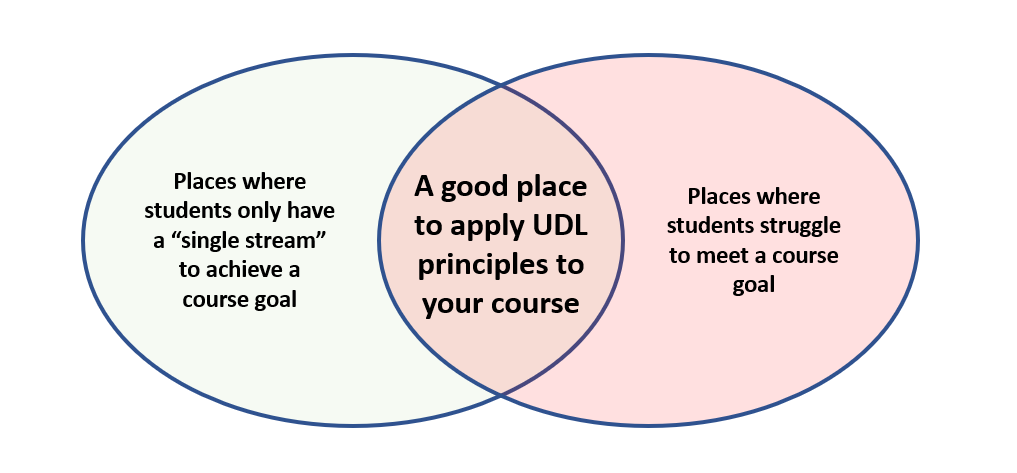Starting Small: The Plus One Approach
Avoiding "Analysis Paralysis"
Hopefully by this point, you have a better understanding of the Universal Design for Learning approach, and can see some of the ways in which the UDL guidelines might help you better reach the needs of your students.
For some instructors, their first encounter with UDL brings a mix of emotions and reactions: at first, the approach may seem revelatory, and show great promise for improving your practice. Yet it can also be easy to feel overwhelmed; perhaps you begin seeing too many ways in which you'd like to improve your course, and don't know how to begin. Time is short, and it can begin to feel like too big of a project to even bother starting.
If you find yourself in this state, you may be in danger of falling into what Tom J. Tobin, an instructional coach and UDL practitioner, calls "analysis paralysis." Tobin's advice is instead to focus on just one additional way to help your students reach a course goal. He's dubbed this approach to UDL the Plus One approach, and it's a perspective we heartily endorse.
Remember, UDL is not a checklist, or series of criteria that must be met for your entire course. Instead, view the UDL framework more as an invitation, or as a source for inspiration when looking for a new way to improve.
![]()
So how do you choose just one place to begin?
Start by thinking about a place where your students struggle to meet a key goal or objective in your course. Now think carefully about the ways that students have to interact with that goal: is there only a single pathway, or single stream for them at a key point or places along the way? Places where both an important goal is being missed, and yet the pathway to that goal is very strict or narrow--these are the prime candidates for just one additional way for students to show what they know, to gain the necessary knowledge, or to feel engaged and connected to the course goal.

CAST: Getting Started (1:44)
View video with Transcript (opens in new window)
Once you've looked over the UDL resources, head to the discussion forum at the end of this module to wrap up this initial training with Universal Design for Learning.